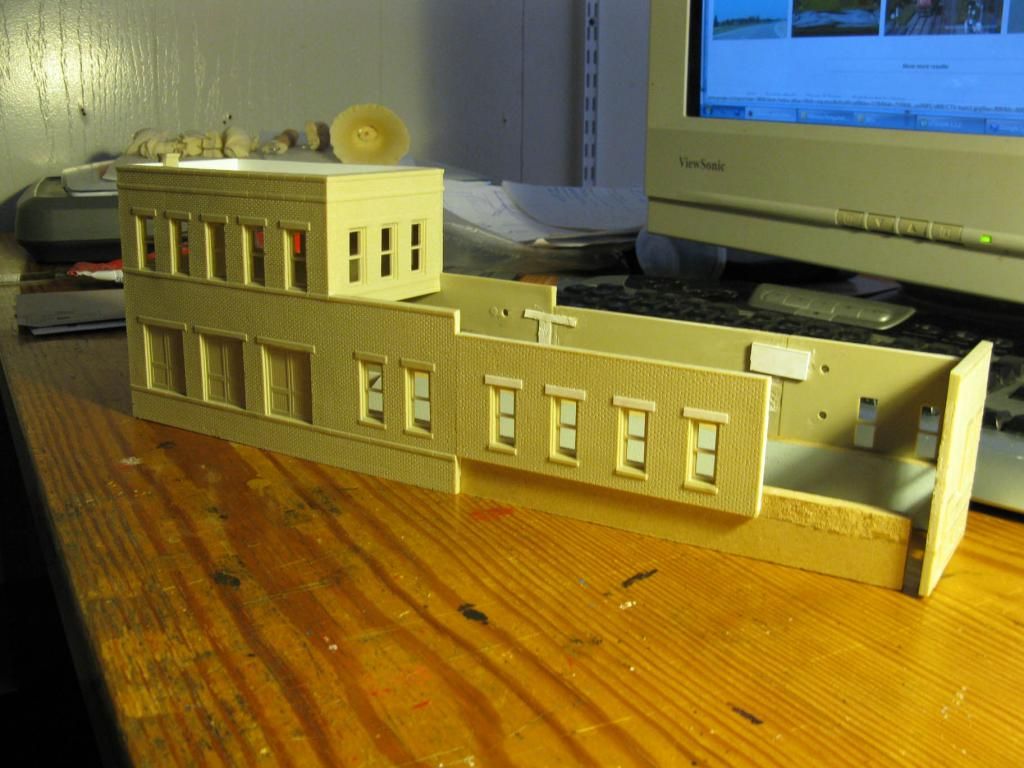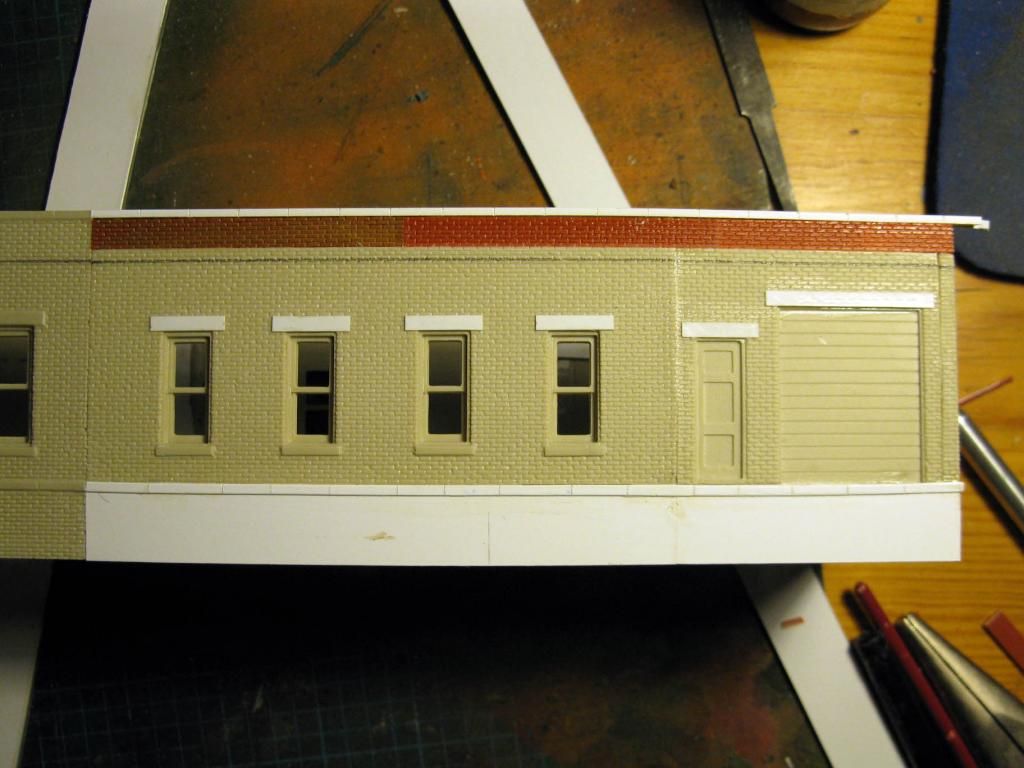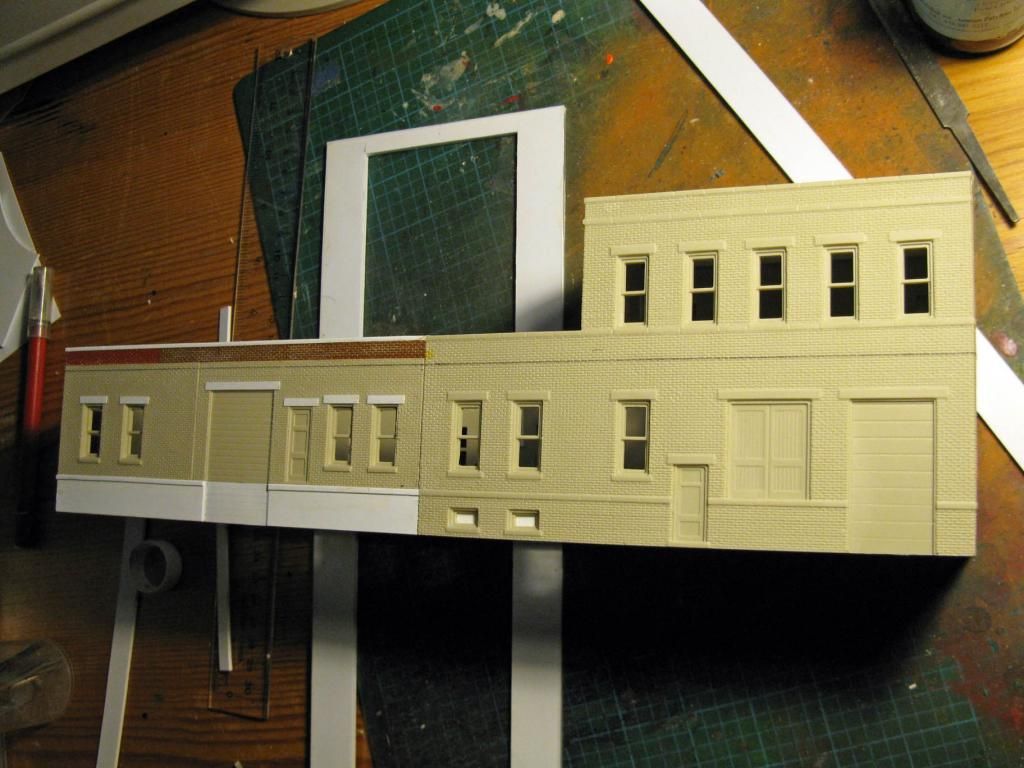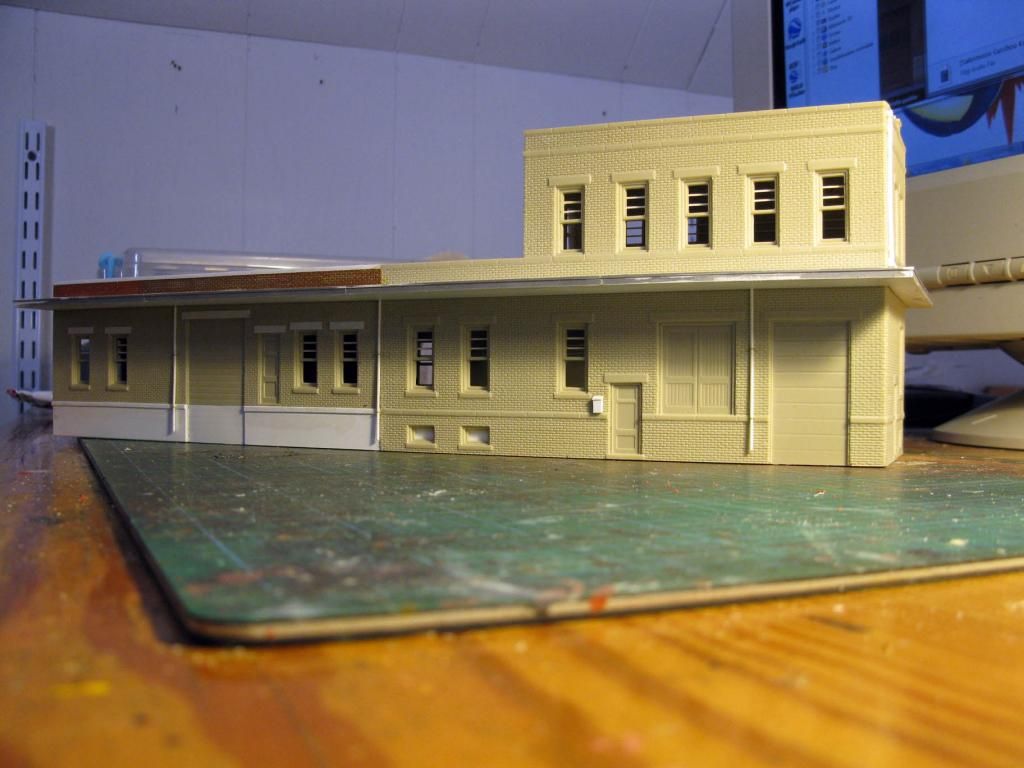Sometimes, you
just need to call it good enough to move forward. It’s more about knowing where
your efforts pay the most.
Saint-Sacrement station is a now abandoned modern station located in St. Malo industrial park
in Quebec City. It was built by CPR in the wake of Quebec City downtown urban
renewal when historic and iconic Palace Station – built to fit Château
Frontenac architecture – was closed down and slated for demolition. Don’t ask
me what those people where thinking, but feel safe, Palace Station survived in
this ocean of destruction and reopened later under VIA Rail.
The new
station was/is a spartan building design in a dirt cheap brutalist
architectural style. Forget fancy brick and wood work from old times; forget
modern free layout plan and flowing style. It had none; just a cheap stand-in for
a dying transportation mode.
As bad as it
was, it still had some charm from a modeller perspective, including a piggyback
terminal, a gritty industrial setting and a signal bridge! Why the signal
bridge? Because they are seldom found in Eastern Quebec were single-track
mainline is the rule. When you think about signal bridge in the area, you
automatically think about CPR mainline East to Allenby in Quebec City.
Anyway, when
came the time to model the station, I automatically thought about a half-finished
kitbash of DPM generic structures (Cutting Co. and Taxi Cab). Originally, it
would have been a factory on an ill-fated switching layout but I felt it was
fine material to depict a modern freight-oriented station. In fact, it reminded
me ex-CRP Farnham station located in Southern Quebec (home of now infamous
MMA’s Quebec operations).
Farnham
Station was built in the early 50s, replacing a grandiose burn down structure
from Victorian era. Not a masterpiece, it’s not an ugly duckling either.
Honestly, it has charm with its pure brick and stone lines; a perfect prototype
for a dying CPR line in downtown Quebec City.
The DPM bash,
with its two-storey office and station and a one-storey warehouse was perfect
to fit the bill. But to get a modern flavour, it definitely needed large and
gracious steel over hanged roof so typical of the era. Using laminated styrene
sheets and Evergreen roof cladding, I easily made one similar to Farnham. It
totally changed the look of the building, helping to hide its DPM origin.
Another
crucial detail was windows. Often, in the 1950, it was popular to had
horizontal mullions on sash windows to express better a sense of horizontality and
speed so dear at that time. It was done by gluing thin strips of paper on the
back of the structure with solvent cement. Yes, solvent cement is an excellent
bonding agent between porous material like paper and styrene when used with
care.
Downspouts and
electrical wiring were added to the structure to hide non aesthetical seams and
give some depth and realism to the station. With most bashing done, only
painting and adding small details such as railing and light fixtures are left.
Stay tuned!




No comments:
Post a Comment